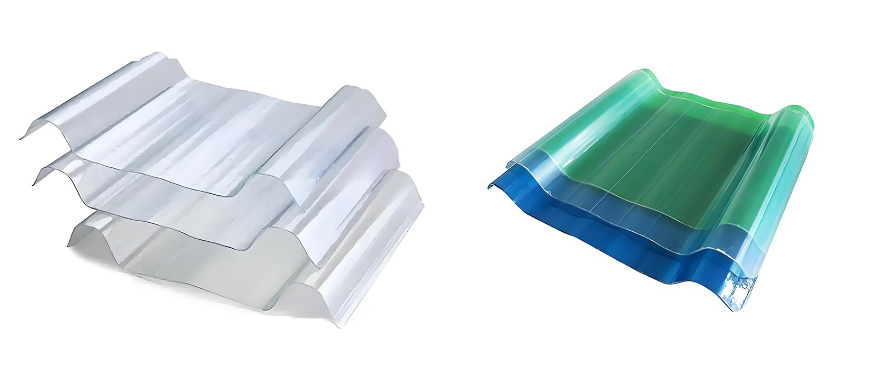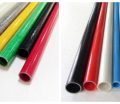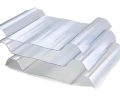
Ahesive bonding fiberglass sheets to plywood is a vital process in various applications, particularly in construction and manufacturing. This technique not only enhances the structural integrity of projects but also provides significant aesthetic improvements. By creating a strong bond between the fiberglass and plywood, builders and designers can achieve lightweight yet durable structures that resist moisture, corrosion, and wear. The versatility of this bonding method makes it ideal for diverse uses, from marine vessels to architectural elements. Understanding the benefits of adhesive bonding fiberglass sheets to plywood allows professionals to make informed decisions, ensuring both functional and visually appealing results in their projects.
What is Adhesive Bonding: Adhesive Bonding Fiberglass Sheets to Plywood
Adhesive bonding is a crucial technique that involves using adhesives to join two or more materials, such as fiberglass sheets and plywood. This method plays a significant role in construction and repair projects due to its ability to create strong, durable connections without the need for traditional mechanical fasteners or welding. The significance of adhesive bonding in various applications includes:
- Enhanced Structural Integrity: Provides a continuous bond that distributes stress evenly across surfaces.
- Lightweight Solutions: Reduces overall weight compared to using metal fasteners, benefiting projects where weight is a concern.
- Moisture Resistance: Many adhesives offer resistance to moisture, preventing delamination and enhancing durability.
- Aesthetic Appeal: Creates a smooth surface finish without visible fasteners, improving the overall appearance of the project.
- Ease of Application: Simplifies the bonding process, allowing for quicker assembly and repairs.
Adhesive Bonding vs. Mechanical Fasteners and Welding
Understanding how adhesive bonding differs from mechanical fasteners and welding is essential for selecting the appropriate joining method for specific applications. The following table highlights key differences between these techniques:
| Aspect | Adhesive Bonding | Mechanical Fasteners | Welding |
|---|---|---|---|
| Joining Method | Uses adhesives to bond materials | Utilizes screws, bolts, or rivets | Fuses materials through heat |
| Weight | Typically lighter | Adds additional weight | Can add weight due to filler material |
| Flexibility | Allows for some flexibility | Rigid connections | Can create strong but rigid joints |
| Aesthetic Impact | Smooth finish without visible fasteners | Visible fasteners may affect appearance | Weld seams can be ground for a smooth finish |
| Repairability | Often easier to repair or replace | Can require additional parts or tools | Repairs can be complex and require skill |
Ahesive bonding fiberglass sheets to plywood offers a unique combination of benefits, making it an attractive choice for many construction and repair applications. By understanding the differences and advantages of adhesive bonding, professionals can make informed decisions that enhance the performance and aesthetics of their projects.
How to Use Adhesive Bonding for Fiberglass Sheets to Plywood
Ahesive bonding fiberglass sheets to plywood requires careful attention to detail to ensure a strong, lasting connection. By following the steps outlined below, you can achieve optimal results in your projects.
Step 1: Surface Preparation
Proper surface preparation is crucial for ensuring a strong bond between fiberglass sheets and plywood. Here are techniques to prepare both surfaces effectively:
- Fiberglass Sheets:
- Cleaning: Use a mild detergent and water to clean the surface, removing any dust, grease, or contaminants. Rinse thoroughly and allow it to dry completely.
- Sanding: Lightly sand the surface with fine-grit sandpaper (around 120-220 grit) to create a rough texture. This increases the surface area for better adhesion. Be sure to clean off any dust after sanding.
- Plywood:
- Sanding: Sand the surface of the plywood with medium-grit sandpaper (around 80-120 grit) to remove any smooth finishes or imperfections. This will also enhance the adhesive’s grip.
- Cleaning: After sanding, wipe down the plywood with a damp cloth to remove dust, allowing it to dry fully before proceeding.
Step 2: Choosing the Right Adhesive
Selecting the appropriate adhesive is essential for effective bonding. Here are some recommended adhesives for bonding fiberglass sheets to plywood:
- Epoxy Adhesives: These provide a strong bond, excellent moisture resistance, and are suitable for various environmental conditions. They cure to form a durable, rigid connection.
- Polyurethane Adhesives: Known for their flexibility and strong adhesion, polyurethane adhesives are also resistant to moisture and can accommodate slight movements between materials.
Step 3: Bonding Process
Once the surfaces are prepared and the adhesive is selected, follow these steps for bonding:
- Application: Apply a uniform layer of the chosen adhesive to one surface (either the fiberglass or plywood). Use a notched trowel for even distribution, especially with thicker adhesives.
- Alignment: Carefully align the fiberglass sheet with the plywood, ensuring it is positioned correctly before pressing down. It’s important to avoid repositioning the materials once they make contact with the adhesive.
- Pressure: Apply even pressure across the surface to eliminate air bubbles and ensure full contact between the adhesive and both materials. This can be achieved by using clamps or weights.
- Curing Time: Allow the adhesive to cure according to the manufacturer’s instructions. Curing times can vary significantly based on the adhesive type and environmental conditions, so ensure adequate time for a complete bond.
Tips for Achieving a Strong Bond
- Temperature and Humidity: Work in an environment with optimal temperature and humidity levels, as these factors can affect adhesive performance.
- Follow Instructions: Always adhere to the adhesive manufacturer’s guidelines regarding application, curing times, and safety precautions.
- Inspect the Bond: After curing, check the bond integrity by gently testing the connection. Ensure that the fiberglass sheet is securely adhered to the plywood.
By mastering the process of ahesive bonding fiberglass sheets to plywood, you can achieve a durable and visually appealing result that enhances the performance of your projects.
Understanding Finished Fiberglass Sheets
Adhesive Bonding Fiberglass Sheets to Plywood: Best Adhesives for Bonding Fiberglass Sheets to Plywood
When it comes to ahesive bonding fiberglass sheets to plywood, selecting the right adhesive is crucial for achieving a strong and durable bond. Various types of adhesives are available, each with its own advantages and ideal usage scenarios. Below, we explore the most effective adhesive options for this application.
Epoxy Adhesives
Overview: Epoxy adhesives are a popular choice for bonding fiberglass sheets to plywood due to their robust strength and excellent durability.
- Advantages:
- High Strength: Epoxy provides a very strong bond that can withstand significant stress, making it ideal for heavy-duty applications.
- Moisture Resistance: Epoxies are resistant to moisture, which helps prevent delamination in humid conditions.
- Versatility: They can be used on various surfaces, including metals, plastics, and wood, making them versatile for different projects.
- Ideal Usage Scenarios: Epoxy adhesives are particularly well-suited for applications requiring high strength, such as marine construction, automotive repairs, and structural components where durability is critical.
Polyurethane Adhesives
Overview: Polyurethane adhesives are known for their flexibility and strong adhesion, making them another excellent choice for bonding fiberglass sheets to plywood.
- Features:
- Flexibility: These adhesives remain flexible after curing, which allows them to absorb stress and movement without cracking.
- Excellent Moisture Resistance: Polyurethane adhesives are highly resistant to water, making them ideal for outdoor and marine applications.
- Easy Application: They can be applied with ease, allowing for a straightforward bonding process.
- Benefits in Bonding: Their flexibility makes polyurethane adhesives ideal for scenarios where materials may expand or contract due to temperature changes, ensuring the bond remains intact.
Comparison of Adhesive Types
The following table summarizes the key differences between epoxy and polyurethane adhesives for bonding fiberglass sheets to plywood:
| Adhesive Type | Strength | Flexibility | Curing Time | Ideal Applications |
|---|---|---|---|---|
| Epoxy Adhesives | Very High | Low | Longer (6-24 hours) | Marine construction, heavy-duty repairs |
| Polyurethane Adhesives | High | High | Moderate (1-4 hours) | Outdoor projects, flexible applications |
Choosing the right adhesive for ahesive bonding fiberglass sheets to plywood is essential for ensuring the longevity and effectiveness of your project. Both epoxy and polyurethane adhesives offer unique benefits, and understanding their properties will help you select the best option for your specific needs. Whether you prioritize strength or flexibility, these adhesives can deliver reliable results for various applications.
DIY Adhesive Bonding Techniques for Ahesive Bonding Fiberglass Sheets to Plywood
For DIY enthusiasts looking to engage in ahesive bonding fiberglass sheets to plywood, understanding the proper techniques and preparations is essential for achieving a successful project. Here are some practical tips to ensure a smooth bonding process.
Tools and Materials Needed
To effectively bond fiberglass sheets to plywood, gather the following tools and materials before starting your project:
- Adhesives: Choose between epoxy or polyurethane adhesives based on your specific needs and application.
- Surface Preparation Tools:
- Sandpaper (various grits: 80-220)
- Cleaning cloths or rags
- Mild detergent and water solution
- Application Tools:
- Notched trowel or spreader for even adhesive application
- Brushes for applying adhesive (if using liquid epoxy)
- Clamping Tools:
- C-clamps or bar clamps to hold the sheets in place while curing
- Weights or flat boards to distribute pressure evenly
- Safety Gear:
- Gloves to protect hands from adhesives
- Safety glasses to shield eyes from splashes
Common Mistakes to Avoid
Being aware of common mistakes can help ensure a successful bonding experience. Here are some pitfalls to avoid:
- Insufficient Surface Preparation: Failing to clean and sand both surfaces can result in weak adhesion. Ensure surfaces are thoroughly prepared before applying adhesive.
- Over-application of Adhesive: Using too much adhesive can create a mess and prevent proper bonding. Apply a thin, even layer for the best results.
- Neglecting Curing Time: Rushing the process by not allowing adequate curing time can compromise the bond. Always follow the manufacturer’s recommendations for curing.
- Ignoring Temperature and Humidity: Adhesives may not cure properly in extreme temperatures or high humidity. Aim for a controlled environment for optimal adhesion.
Safety Precautions
When working with adhesives, safety should always be a priority. Here are essential safety precautions to take:
- Work in a Well-Ventilated Area: Ensure proper airflow to avoid inhaling fumes, especially when using strong adhesives like epoxy.
- Use Protective Gear: Always wear gloves and safety glasses to protect yourself from adhesive contact and splashes.
- Follow Manufacturer Instructions: Read and adhere to the safety instructions provided with the adhesive to prevent accidents and ensure safe handling.
- Keep Materials Away from Heat Sources: Store adhesives away from heat or open flames, as they can be flammable.
By following these DIY adhesive bonding techniques for ahesive bonding fiberglass sheets to plywood, you can achieve a durable and lasting bond in your projects. Proper preparation, awareness of common mistakes, and adherence to safety precautions will contribute to a successful bonding experience. Whether you are working on a craft project, home repair, or marine construction, these tips will help you navigate the bonding process with confidence.
Fiberglass Sheets for Shower: Upgrade Your Bathroom Design
Finding Ahesive Bonding Fiberglass Sheets to Plywood Near You
When embarking on a project involving ahesive bonding fiberglass sheets to plywood, finding the right materials is crucial. Below are some effective tips for locating local suppliers, exploring online options, and ensuring you select quality adhesive products for your DIY endeavors.
Tips for Locating Local Suppliers
- Local Hardware Stores: Start by visiting local hardware and home improvement stores. These retailers often carry a selection of fiberglass sheets and various adhesives suitable for bonding.
- Building Supply Centers: Check specialized building supply centers, which typically have a wider variety of construction materials, including fiberglass and adhesives.
- Marine Supply Stores: If your project is marine-related, consider visiting marine supply stores. They often stock fiberglass sheets and high-quality marine-grade adhesives designed for durability in wet environments.
- Ask for Recommendations: Engage with local contractors or DIY enthusiasts in your community. They may have valuable insights or recommendations for reliable suppliers.
Overview of Popular Online Retailers
If local sourcing proves challenging, numerous online retailers offer a wide selection of fiberglass sheets and adhesives. Here are some popular options:
- GangLong Fiberglass: With over 24 years of expertise, GangLong Fiberglass is a leading provider of high-quality fiberglass materials and custom manufacturing solutions. Founded in 2000 and based in Hebei Province, China, we offer an extensive range of products including fiberglass fabrics, fiberglass tubes, fiberglass profiles, fiberglass sheets, and custom fiberglass hand lay-up solutions. Our innovative designs and superior craftsmanship extend to cable trays and grating products, we offer a variety of styles, materials, and finishes ensuring optimal performance and durability.
Suggestions for Finding Quality Adhesive Products
- Read Reviews: Whether shopping online or in-store, always check customer reviews and ratings for the adhesive products. This feedback can provide insights into the effectiveness and reliability of the adhesive.
- Consult Product Specifications: When selecting adhesives, review the specifications to ensure they are compatible with both fiberglass and plywood. Check for features like moisture resistance, flexibility, and curing times.
- Consider the Project Needs: Choose adhesives based on the specific requirements of your project. For example, if your project involves exposure to water, opt for waterproof adhesives like epoxy or polyurethane.
- Ask for Expert Advice: If you’re unsure which adhesive to choose, consult with store staff or contact manufacturers directly. They can provide recommendations based on your specific bonding needs.
Finding ahesive bonding fiberglass sheets to plywood near you can be straightforward with the right approach. By exploring local suppliers, leveraging online retailers, and ensuring the quality of your adhesive products, you can set yourself up for a successful DIY project. Whether you’re building, repairing, or creating, the right materials will significantly impact the durability and performance of your work.
Lightweight fiberglass sheets for cars – ideal for customization
FAQs about Ahesive Bonding Fiberglass Sheets To Plywood
Yes, fiberglass can bond effectively to plywood when the correct adhesive and proper techniques are used. The key to achieving a strong bond lies in the surface preparation of both the fiberglass and plywood. Before bonding, it’s essential to clean and sand both surfaces to create a rough texture that enhances adhesion. Common adhesives used for this purpose include epoxy and polyurethane, which provide strong, durable bonds. Additionally, ensuring that the ambient temperature and humidity are within the recommended ranges during the bonding process can further improve adhesion. Overall, with the right preparation and adhesive choice, fiberglass can securely bond to plywood, making it suitable for various applications, including marine construction and automotive repairs.
The best glue for bonding plywood to fiberglass depends on the specific requirements of your project, but two popular options are epoxy and polyurethane adhesives. Epoxy is known for its exceptional strength and durability, making it ideal for heavy-duty applications. It cures to form a rigid bond that can withstand significant stress and moisture exposure, which is particularly important in marine environments. Polyurethane adhesive, on the other hand, offers a degree of flexibility, allowing it to accommodate movement between materials without cracking. This makes it a great choice for projects where thermal expansion or contraction might occur. When selecting the best glue, consider factors such as the environmental conditions, the intended use of the bonded materials, and the specific properties of the adhesive.
To effectively stick fiberglass to wood, follow these essential steps for optimal adhesion. First, prepare both surfaces by cleaning them thoroughly to remove any dirt, grease, or contaminants. Next, sand the surfaces using fine-grit sandpaper to create a rough texture, which enhances the bonding area. After preparing the surfaces, choose a suitable adhesive, such as epoxy or polyurethane, and apply an even layer to one of the surfaces using a notched trowel or brush. Carefully align the fiberglass with the wood, ensuring it is positioned correctly, and then press down firmly to eliminate air bubbles. If necessary, use clamps or weights to maintain pressure while the adhesive cures. Allow the adhesive to cure for the time specified by the manufacturer to ensure a strong bond. By following these steps, you can achieve a secure attachment of fiberglass to wood, suitable for various applications.
The best adhesive for fiberglass depends on the specific application and the materials being bonded. For most general purposes, epoxy resin is often considered the top choice due to its superior strength, durability, and excellent moisture resistance. It forms a rigid bond that can withstand heavy loads and is suitable for both indoor and outdoor use, making it ideal for marine applications and automotive repairs. Polyurethane adhesive is another excellent option, particularly when flexibility is needed. It provides strong adhesion while allowing for some movement, which can be beneficial in applications exposed to varying temperatures or moisture levels. Other adhesives like cyanoacrylate (super glue) may work for smaller projects, but for larger or more demanding applications, epoxy or polyurethane will generally yield better results. Ultimately, selecting the best adhesive involves considering the specific requirements of your project, including the types of materials involved and the environmental conditions they will face.

As the editor of GangLong Fiberglass, I have years of experience and in-depth research, focusing on cable tray products, fiberglass solutions, and grille systems. I incorporate years of industry insights and practical experience into every content, committed to promoting the progress of the industry. At GangLong Fiberglass, my commitment is reflected in every product, from innovative cable trays to durable fiberglass solutions and sturdy grille systems. As an authoritative voice in the industry, my goal is to provide valuable information to professionals and businesses and promote forward-looking solutions.


